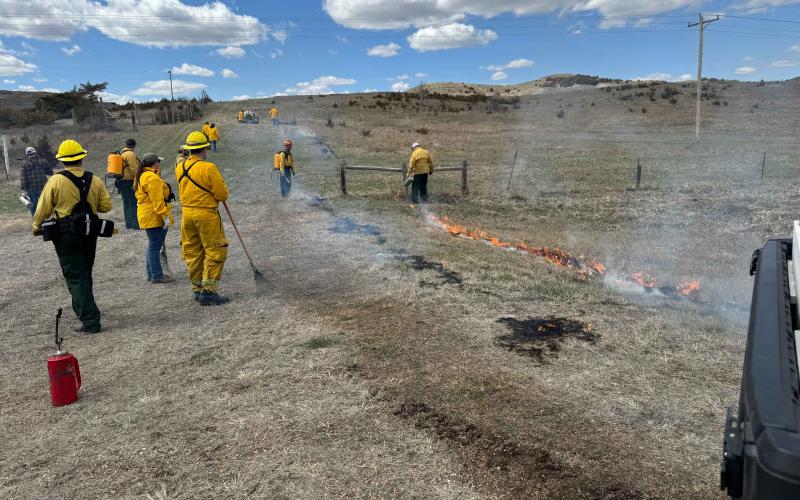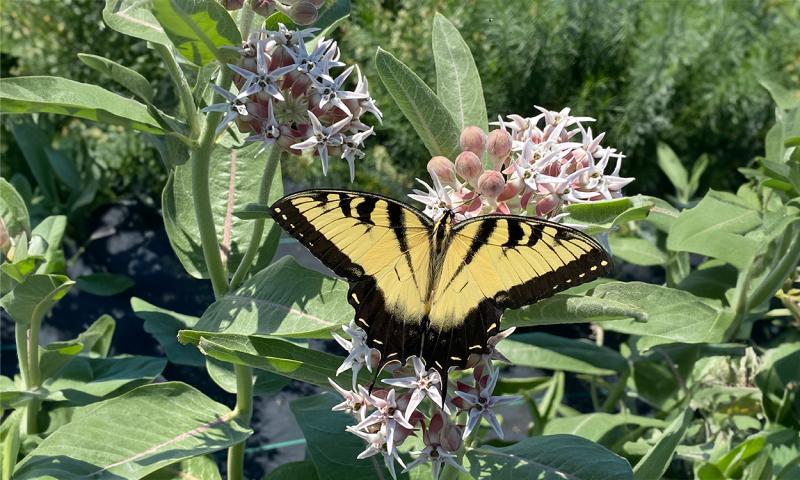
Written by Grace Villmow, SDSU Natural Resource Management graduate student, under the direction and review of Lora Perkins, SDSU Associate Professor in Natural Resource Management, Amanda Bachmann, and Kristine Lang.
Monarchs eat milkweed, tiger swallowtails eat… well, it turns out they eat cherry trees, willows, ash trees, poplars, and more. Many butterflies and moths are generalists, meaning that their larva can use a variety of host plants as food. Some host plants can support hundreds of different species of moths and butterflies. These plants are called keystone plants. Without these important plants, the number and types of butterflies and moths in an area may decline.
Why does this matter? Butterflies and moths play a pivotal role in ecosystems before they even reach adulthood. Caterpillars, the larva of moths and butterflies, are a soft, high-protein food source for baby birds. Many birds rely on caterpillars to feed their young, and global insect decline is reducing the presence of important pollinators, decomposers, and beneficial insects around the world. Read on to learn about some of the best host plants you can grow in your yard to support butterflies, moths, and everything that relies on them!
Trees
Oak
Bur oak (Quercus macrocarpa), Scrub oak (Quercus gambelii)
Across the Great Plains, oak trees support many different species of butterflies and moths. Some of the native butterflies and moths you can find using South Dakota oak trees include the red-spotted purple, various duskywings, and the cecropia moth.
Chokecherry
(Prunus virginiana)
This small tree produces a tart fruit and attracts many different butterflies and moths. Some of the most-striking butterflies that feed on its leaves include the eastern tiger swallowtail (Figure 1), two-tailed swallowtail, and coral hairstreak.
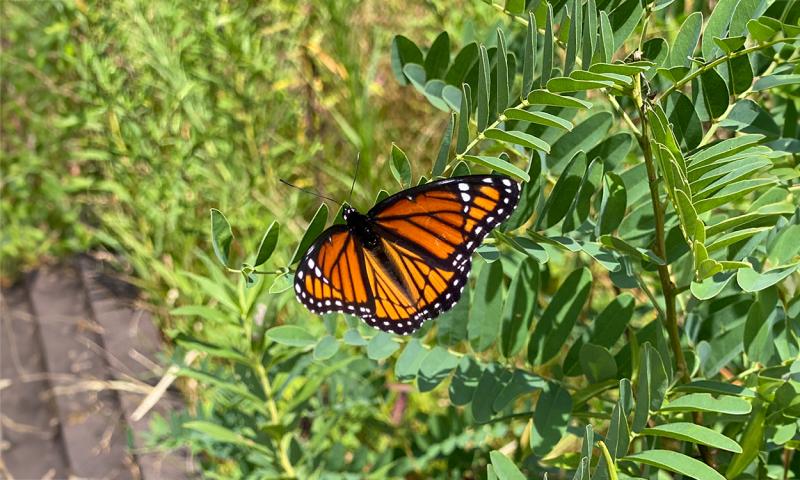
Willow
Sandbar willow (Salix interior), Scouler’s willow (Salix scouleriana)
Willow trees are excellent additions to lower areas prone to flooding and runoff. Butterflies like the western tiger swallowtail, Acadian hairstreak, viceroy (Figure 2), and the mourning cloak all use willows as a host plant for their larva.
Birch
Paper birch (Betula papyrifera)
Paper birches are a shorter tree with white bark that peels off in paper-like layers. The caterpillars of white admirals, green commas, Compton tortoiseshells, and Polyphemus moths can all be found on birch trees in South Dakota.
Shrubs
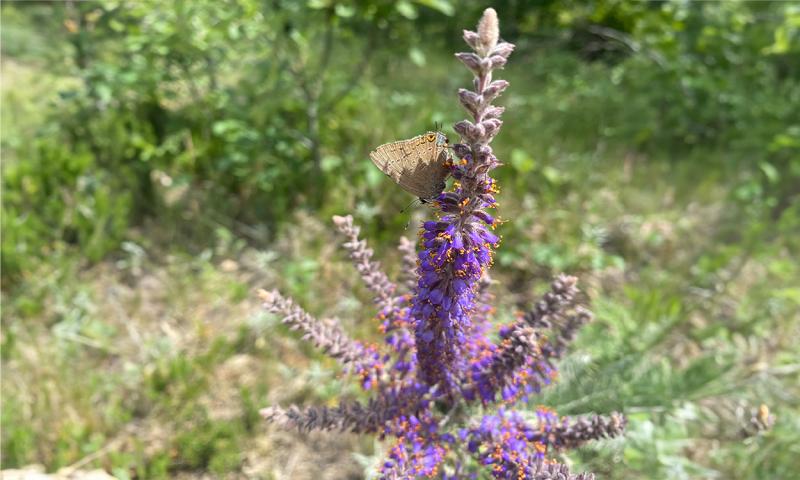
Leadplant
(Amorpha canescens)
This nitrogen-fixing shrub grows two to three feet tall with showy purple flowers (Figure 3). It attracts butterflies that like to eat legumes, including the dog face butterfly and butterflies in the sulfur and blue families.
Wild Black Currants
(Ribes americanum)
This small shrub produces hanging bunches of pale-yellow flowers that ripen into a dark, sweet berry. A few butterflies, like the hoary comma in the west and the gray comma across the state, use currant bushes as their host plant, in addition to moths in the geometer family. You may know these moths in their larval state by their common name – inchworms!
Grasses and Forbs
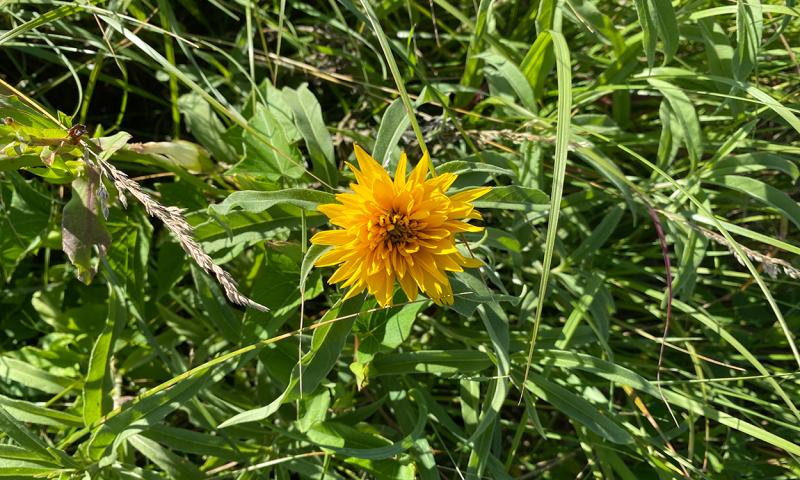
Grasses and Forbs
(Helianthus ssp.)
South Dakota is home to a variety of perennial sunflowers, such as stiff sunflower and sawtooth sunflower (Figure 4). Checkerspot butterflies, like the gorgone checkerspot and silvery checkerspot, use sunflowers as a host plant. You may also find sunflower moth larva in their petals.
Asters
(Symphyotrichum ssp.)
Asters are late-blooming flowers that come in shades of white, blue, purple, and more (Figure 5). Some of South Dakota’s native asters include the heath aster, New England aster, and smooth blue aster. A variety of butterflies use asters as their host plants, including the sagebrush checkerspot, northern crescent, tawny crescent, and a variety of other crescent species.

Little bluestem
(Schizachrium scoparium)
Butterflies can eat grasses, too! Little bluestem is a one-to-two-foot-tall grass that grows in neat bunches. Many skipper butterflies use little bluestem as their host plant, including the endangered Dakota skipper.
In Summary
This is just a shortlist of valuable plants you can incorporate into your landscaping to create habitat for native moths and butterflies. Planting native plants can provide greater ecological benefits than planting introduced plants, because native plants have been developing relationships to all the other insects, microbes, and animals in an area for thousands, or even millions of years. Check out the Native Plant Initiative for more information on South Dakota native plants and consider adding some of these plants to your garden!
References and Resources
- Marrone, Gary M. (2002) Field Guide to Butterflies of South Dakota. South Dakota Game Fish and Parks.
- Simpson, Michael G. (2019) Species and Conservation in Plant Systematics. Plant Systematics (Third Edition) Academic Press pages 671-690
- Garrison Piel, Douglas W. Tallamy, Desiree L. Narango (2021) Lepidoptera Host Records Accurately Predict Tree Use by Foraging Birds. Northeastern Naturalist, 28(4), 527-540
- Hallmann, Caspar A. et al (2017) More than 75 percent decline over 27 years in total flying insect biomass in protected areas. PLOS one.
- Keystone Native Plants: Great Plains – Ecoregion 9. Garden for Wildlife, National Wildlife Federation.

